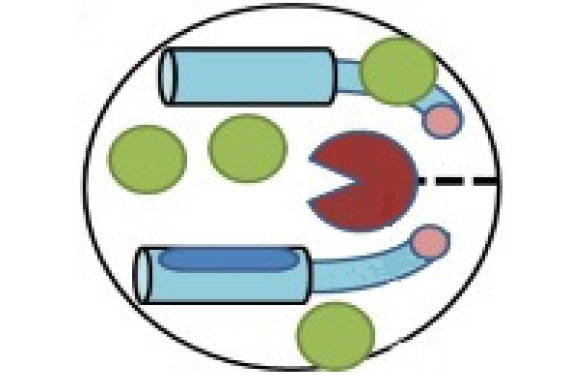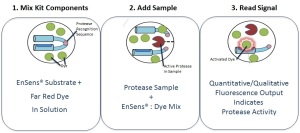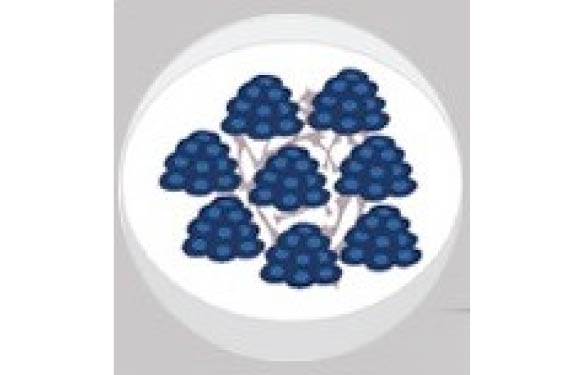EnSens assays, a new protease activity assay technology, which are produced by Enzium, were recently introduced to the European market. A number of assays are available from catalog, such as activity assays for MMP-2, MMP-9, MMP-14, MMP-25, ADAM10, ADAM17, Factor Xa, Furin, and Thrombin.
But what about if what you’re looking for is not available? In this post, we’ll take a look at how you can get an optimal substrate for your protease of interest, even if it is not yet obtainable from catalog.
EnSens technology
First, let’s take a look at the EnSens assay technology itself. It’s based on a non-FRET technology and makes use of a protein substrate expressed in E. coli which is a modular dumbbell comprising two domains separated by a linker that contains a highly specific protease recognition sequence. One domain is the dye-binding domain, and the other is a blocking domain. When the linker is cleaved by a protease, separating the two domains, the binding domain is free to bind dye, constraining it and causing it to fluoresce (see Figure below).
EnSens assays overcome limitations of FRET based protease assays
- the substrate can incorporate full recognition site sequences – in FRET assays the recognition sites usually have to be shorter which can result in a number of false positives and negatives because the recognition site might not be highly selective.
- The substrate is an scFv-based protein (single-chain variable fragment, an artificially generated antibody fragment) which confers high stability in vitro and in vivo.
- The EnSens se-Red fluorophore is resistant to photobleaching up to 48 hours
- The long emission wavelength (665nm) reduces interference from other assay components
- The assay works stably in wide range of pH, salt, & solvent conditions
- Substrate and fluorophore are separate in the systems, so the fluorophore is constantly renewed in solution
- The system is characterized by high signal-to-noise ratios: 6-20x
- The read-out can be done in standard plate or cuvette fluorimeters
- The EnSens assay gives repeatable and reproducible kinetic activity curves from reagent to reagent
and finally (and this is where it gets interesting for non-catalog items!):
- The substrate is modular, allowing easy swapping of protease recognition sites – thus customized substrates can be obtained if you know the recognition site of your protease of interest
So, you can get your customized protease substrate!
In other words: If you want to screen for modulators/inhibitors of a protease with a known recognition site, you simply need to provide the sequence of the site – and the substrate and the complete EnSens assay can be designed for you in cooperation with Enzium.
Interested in a highly specific protease assay for your screening? Get in touch through the form below, I’m sure a tailored solution can be found to match your needs exactly!




